A healthy home doesn’t stay that way by accident. It’s the result of small, steady routines; quiet habits that keep big repairs from sneaking up on you.
A single loose shingle, a sweating valve, or a lazy sump pump might not look urgent, but left alone, any of them can turn into a soaked ceiling or a flooded basement. The goal is simple: stay ahead of the problems before they get expensive.
We prepared a practical guide to keeping your house in top shape all year long. Let’s get started.
Why a Prevention Plan Pays Off
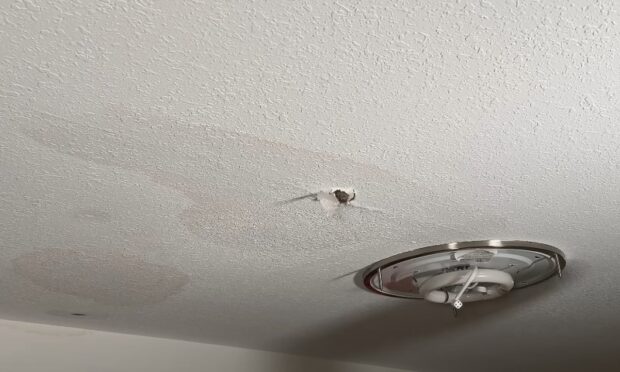
Most homeowners learn one hard lesson the same way, through water damage. According to the Insurance Information Institute , from 2019 to 2023, around 1.5 percent of insured homes filed a water damage or freezing claim, making it the second most common type of home insurance loss, right after wind and hail. The numbers aren’t small, and neither are the bills that follow.
The EPA’s WaterSense program estimates that the average household wastes almost 10,000 gallons of water every year from leaks alone.
About one in ten homes leaks more than 90 gallons a day , which adds up to nearly a trillion gallons of wasted water nationwide every year. That’s not just bad for the planet; it’s hard on your budget and your plumbing system.
If a leak ever does happen, time matters. The CDC and EPA both warn that you have 24 to 48 hours to get everything dry before mold starts to grow. Past that, you’re into drywall replacements and health risks.
Routine maintenance might not feel exciting, but it keeps repairs, insurance claims, and headaches to a minimum.
The Quick-Glance Home Care Calendar
The easiest way to make home maintenance stick is to build a schedule. Here’s a practical calendar you can follow without overcomplicating it.
| Frequency | Roof & Exterior | Plumbing & Water Systems | Preventive Upgrades |
| Monthly | Walk around the house, check roof edges, gutters, and grading | Look for drips under sinks, check toilets and supply lines, do a meter leak test | Test smart leak sensors |
| Spring & Fall | Clean gutters, inspect flashing, check attic for stains | Test shutoff valves, flush water heater, check water pressure | Test sump pump, verify battery backup |
| After Severe Weather | Inspect shingles and flashing, clear debris, photograph damage | Check for ceiling stains or attic moisture | Update insurance photos, call roofer if needed |
| Annual | Schedule professional roof inspection | Full water heater service, replace hoses, inspect anode rod | Evaluate need for backflow valve or other upgrades |
The National Roofing Contractors Association recommends at least two inspections per year , ideally in spring and fall, and again after any serious storm.
Roof
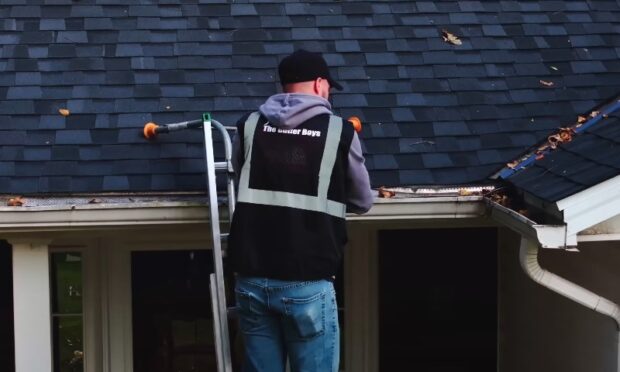
A roof protects the roof and every system beneath it. It’s also one of the most overlooked areas of maintenance.
What to Look for From the Ground
Skip the ladder unless you’re experienced. A pair of binoculars or a phone camera on zoom is safer and usually enough to spot problems:
- Shingles: Look for curling, cracking, or missing tabs.
- Flashing: Check for lifted metal or cracked sealant around chimneys, skylights, and vents.
- Roof edges and valleys: Clear out leaves or branches that trap water.
- Gutters and downspouts: Watch for sagging sections or loose fasteners. Regular gutter maintenance and repair can prevent those small issues from turning into water damage.
- Attic signs: Water stains, rusted nails, damp insulation, or musty smells signal a problem above.
If you notice sagging lines or spongy sheathing, it’s time for a professional inspection.
When to Call a Pro
Call a roofing professional if you see:
- Hail or storm damage
- Persistent stains in the attic that come back after repainting
- Soft or wavy spots visible from the ground
Seasonal Roof Checklist
- Clean gutters and confirm water flows freely.
- Trim branches hanging over the roof.
- Inspect flashing at chimneys and roof-to-wall joints.
- Check the attic after a rain for fresh stains.
- Take dated photos every season for your records.
Insurance adjusters love documentation, and you’ll love having proof if you ever need it.
Plumbing

Water damage rarely starts as a flood. It begins as a quiet drip behind a wall or under a sink. A few minutes of detective work each month can save thousands later.
Run a 15-Minute Leak Audit
Turn off every faucet and appliance. Then go to your water meter. If the small dial or triangle is spinning, water is flowing somewhere it shouldn’t.
From there, check these spots:
- Toilets: Drop food coloring in the tank. If the color reaches the bowl without flushing, replace the flapper.
- Under sinks: Look for swollen wood or white mineral stains.
- Appliances: Check behind washing machines and refrigerators with water lines.
- Basement or crawlspace: Walk along the pipes and walls with a flashlight. Moisture, rust, or mineral bloom means you’ve got a leak.
WaterSense research shows that one in ten homes wastes more than 90 gallons per day through leaks. That’s a silent budget leak you can fix in an afternoon.
Watch Your Water Pressure
Excess pressure makes pipes and hoses wear out faster. Ideally, you want 40–80 psi . Anything higher than that, and it’s time for a plumber.
How to Test It
- Buy a simple hose-bib gauge.
- Attach it to an outdoor spigot.
- Make sure all interior water is off.
- Read the dial. Over 80 psi? Install or adjust a pressure-reducing valve (PRV).
It’s a ten-minute test that can extend the life of your plumbing system.
Washing Machine and Appliance Hoses
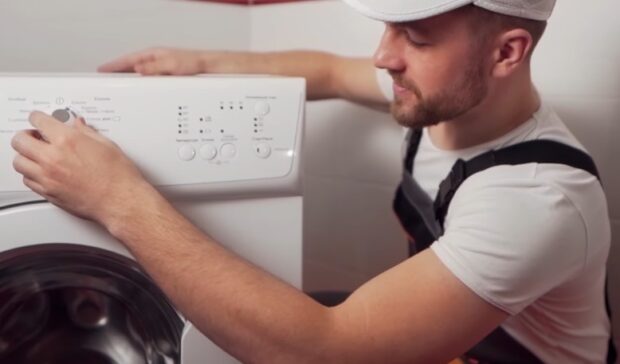
Laundry rooms are common sources of insurance claims. The reason is simple: washing machines use a lot of water fast, and old rubber hoses burst under pressure.
Replace them with braided stainless steel hoses and mark the install date. Replace every five years or sooner if they show wear.
Quick tip : Place a drip pan under the washer and consider adding an automatic shutoff valve that stops the flow if a hose bursts. It’s an inexpensive safeguard that prevents big water bills and soggy floors.
Water Heater Care
Water heaters deserve more love than they get. A few simple habits can extend their lifespan:
- Keep the temperature set to 120°F . It’s hot enough for comfort but cuts scald risk and slows mineral buildup.
- Test the temperature-pressure relief (TPR) valve once a year.
- Flush a few gallons of water annually to remove sediment.
- Inspect for corrosion, especially around the base and fittings.
- Replace the anode rod when it’s heavily corroded.
Those steps keep the heater efficient and help prevent surprise leaks.
Preventive Measures That Reduce Losses
Some maintenance tasks are easy to forget but make a huge difference when the weather turns.
Sump Pump Testing and Backups
If your home has a sump pit, make it part of your quarterly routine.
- Quarterly: Pour water into the pit until the float rises and the pump activates.
- Annually: Clean the intake, check the check valve, and make sure the discharge pipe drains freely outdoors.
Storms often knock out power, which is when you need the pump most. A battery backup keeps it running until the lights come back on. FEMA and many local flood programs recommend this setup as standard protection.
Backflow Protection
Sewer backups are expensive to fix. Homes in low-lying or flood-prone areas benefit from backflow valves installed by licensed plumbers. These prevent municipal sewage from entering your home when lines back up.
Federal and state flood agencies list backflow valves as one of the best mitigation upgrades for older homes.
Mold Prevention After a Leak
Dry everything within 24–48 hours after a leak. Open windows, run dehumidifiers, and remove materials that can’t be dried.
When cleaning, the CDC advises using appropriate concentrations if you use bleach and never mixing it with ammonia or other cleaners. Ventilate well and wear gloves.
Build a Room-by-Room Maintenance Circuit
Routine care works best when you go room by room. Here’s what to look for in each.
Kitchen
- Inspect water lines for the sink, dishwasher, and refrigerator.
- Replace any brittle or kinked lines with braided stainless ones.
- Look for moisture, black spots, or mineral buildup inside sink cabinets.
- Run a leak test after using the dishwasher.
Bathrooms
- Test toilets with food coloring for hidden leaks.
- Reseal cracked caulk or grout before moisture gets into the walls.
- Check behind access panels for valve seepage.
Laundry Room
- Replace hoses every five years and note the date.
- Keep the machine slightly away from the wall to prevent kinking.
- Add a floor drain if your layout allows.
Basement or Crawlspace
- Walk the perimeter after heavy rain.
- Watch for damp streaks, white mineral residue, or fresh puddles.
- Test the sump pump float and confirm that downspouts drain at least 6–10 feet away from the foundation.
Poor drainage is one of the most common causes of wet basements, and it’s easy to fix with an extension pipe or splash block.
Roof Details That Prevent Leaks
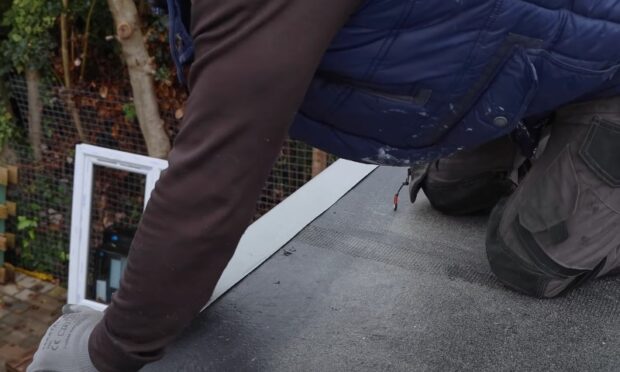
Even the strongest roof can develop weak spots if small details go unchecked. Paying attention to flashing, ventilation, and sealants keeps moisture out and protects everything underneath from costly damage.
Ventilation and Attic Health
Proper attic airflow prevents condensation and ice dams. If you ever notice damp sheathing or frost on nail tips during winter, your attic might not be venting properly. A roofer can assess airflow balance and insulation.
Flashing and Roof-to-Wall Joints
Most leaks start where materials meet. Pay special attention to:
- Step flashing along walls
- Counter-flashing at chimneys
- Plumbing vent boots that dry out and crack
Severe-Weather Upgrades
The IBHS FORTIFIED Roof standards highlight improvements that greatly reduce storm damage:
- A sealed roof deck keeps out wind-driven rain.
- Drip edges and strong starter strips secure the first row of shingles.
- Impact-rated shingles protect against hail.
Small upgrades like these often qualify for insurance discounts in storm-prone areas.
Water Systems
Your home’s water system is about safety and efficiency. A few small settings and checks can make a big difference in preventing leaks, scalds, or pressure-related wear on pipes.
By keeping temperatures, pressure, and backflow protection within the right range, you protect both your plumbing and your peace of mind.
Temperature
Keep water heaters at 120°F . It saves energy, prevents scalds, and slows down corrosion.
Pressure
Static pressure should stay below 80 psi . A pressure-reducing valve keeps plumbing stress under control.
Backflow
Public health standards require working backflow prevention devices to keep drinking water safe. Work with your utility or a licensed plumber to select and maintain the right ones.
Documentation, Insurance, and What to Save
Keep records of everything: photos, invoices, and inspection notes. A digital folder is fine. Dated photos of your roof, plumbing, and appliances can save you hours if you ever file a claim.
Know your policy limits, too. Sudden, accidental damage is usually covered, but slow leaks or groundwater issues often aren’t. If you’re in or near a flood zone, look into National Flood Insurance Program (NFIP) coverage. FEMA provides guides and even grants for preventive retrofits.
A Realistic Seasonal Plan You Can Keep
Keeping up with maintenance doesn’t have to be overwhelming. A simple seasonal plan breaks the work into small, manageable steps that fit naturally into your year. Here’s a realistic schedule you can actually stick to.
Spring Reset
- Clean gutters and inspect flashing.
- Check attic for damp spots.
- Exercise shutoff valves and test pressure.
- Flush a few gallons from the water heater.
Summer Tune-Up
- Trim trees and clear debris from roof edges.
- Check irrigation lines and exterior spigots for leaks.
- Recheck washing machine hoses and connections.
Fall Prep
- Clear gutters again before the leaves pile up.
- Service the water heater fully.
- Test sump pump and battery backup ahead of wet weather.
Winter Watch
- After storms, inspect roof edges for lifted tabs.
- Look for new ceiling stains.
- Run a dehumidifier in basements or crawlspaces to keep moisture low.
Tools That Make Prevention Easier
A few simple gadgets can turn home care into a quick routine rather than a guessing game:
-
- Hose-bib pressure gauge
- Infrared thermometer for ceiling or duct checks
- Moisture meter or disposable indicator cards
- Smart leak sensors under sinks and near water heaters
- Automatic water shutoff devices linked to sensors
- Shop vacuum and fans for quick drying after small leaks
They’re not expensive, and they make spotting problems faster and easier.
When to Bring in the Pros
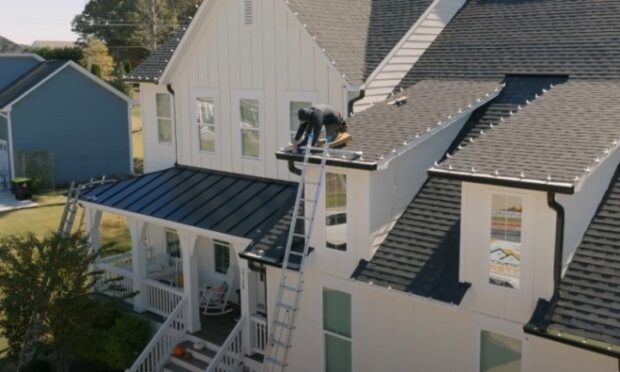
- Visible roof damage or missing shingles after storms
- Water pressure consistently above 80 psi or sudden banging pipes
- Recurring basement flooding or evidence of sewer backup
- Any leak that soaks walls or flooring for more than 48 hours
Professional inspections save money in the long run. They catch problems before they grow, keep your warranty and insurance valid, and preserve your peace of mind.
Bottom Line
A solid home maintenance plan doesn’t require weekends of hard labor. It’s about rhythm: two roof checks a year, a few minutes each month for leak patrol, and seasonal tune-ups on plumbing and sump systems. Those small habits keep your house strong, dry, and comfortable for years.
When you look at the numbers, 1.5 percent of homes facing water or freezing claims, billions of gallons wasted through leaks, it’s clear that prevention isn’t just good housekeeping. It’s financial common sense.
Take an hour this weekend, walk your home inside and out, and note what needs attention. That’s the kind of maintenance that keeps surprises small and your home running like it should.
 Jewel Beat
Jewel Beat

